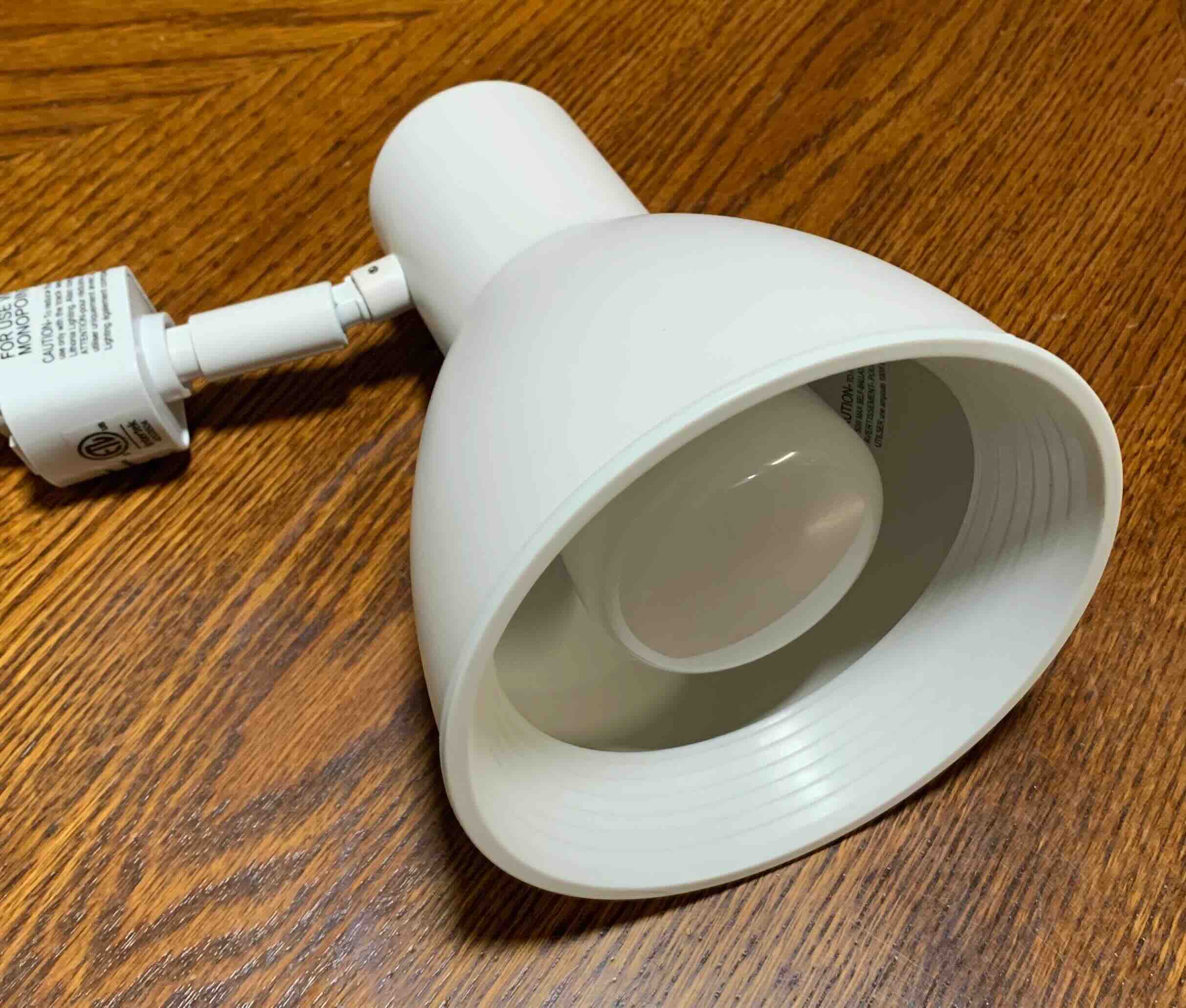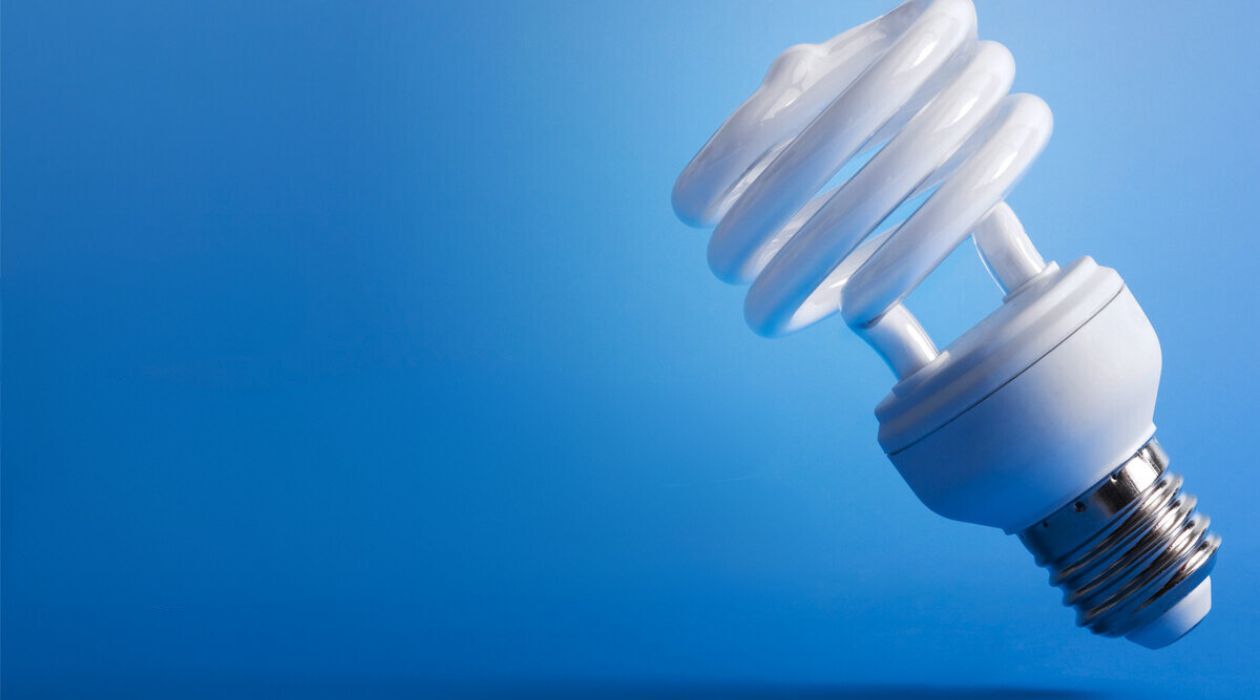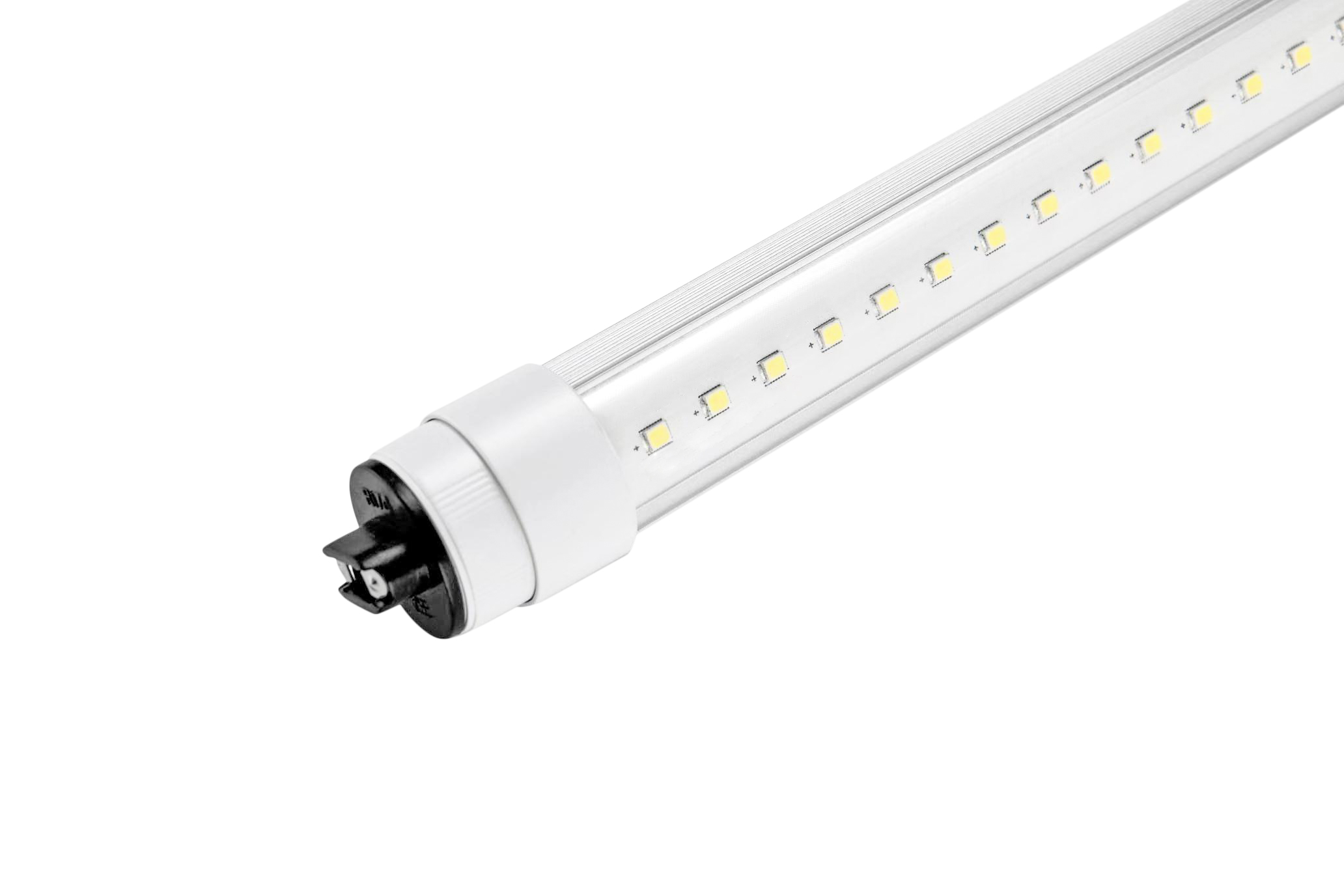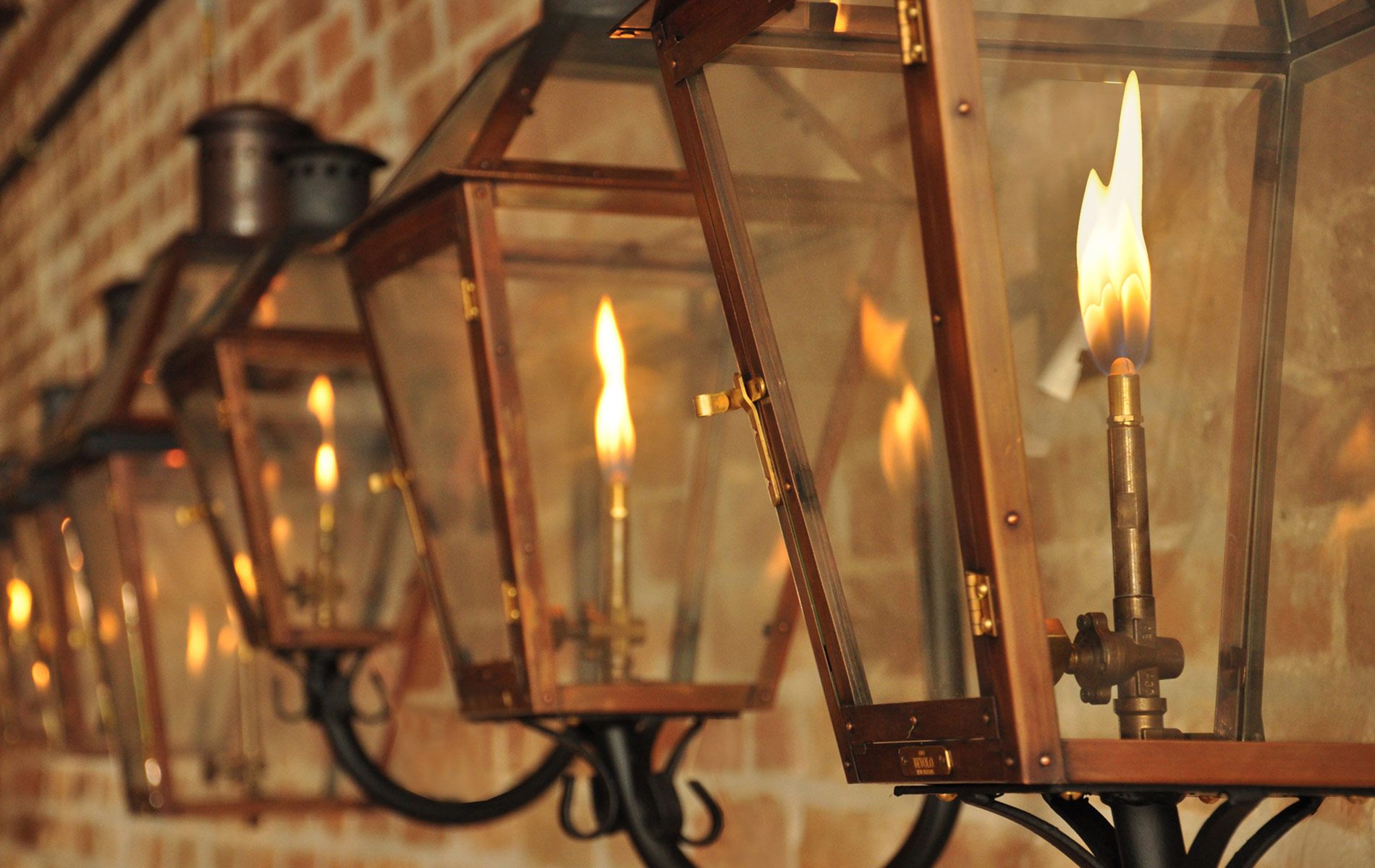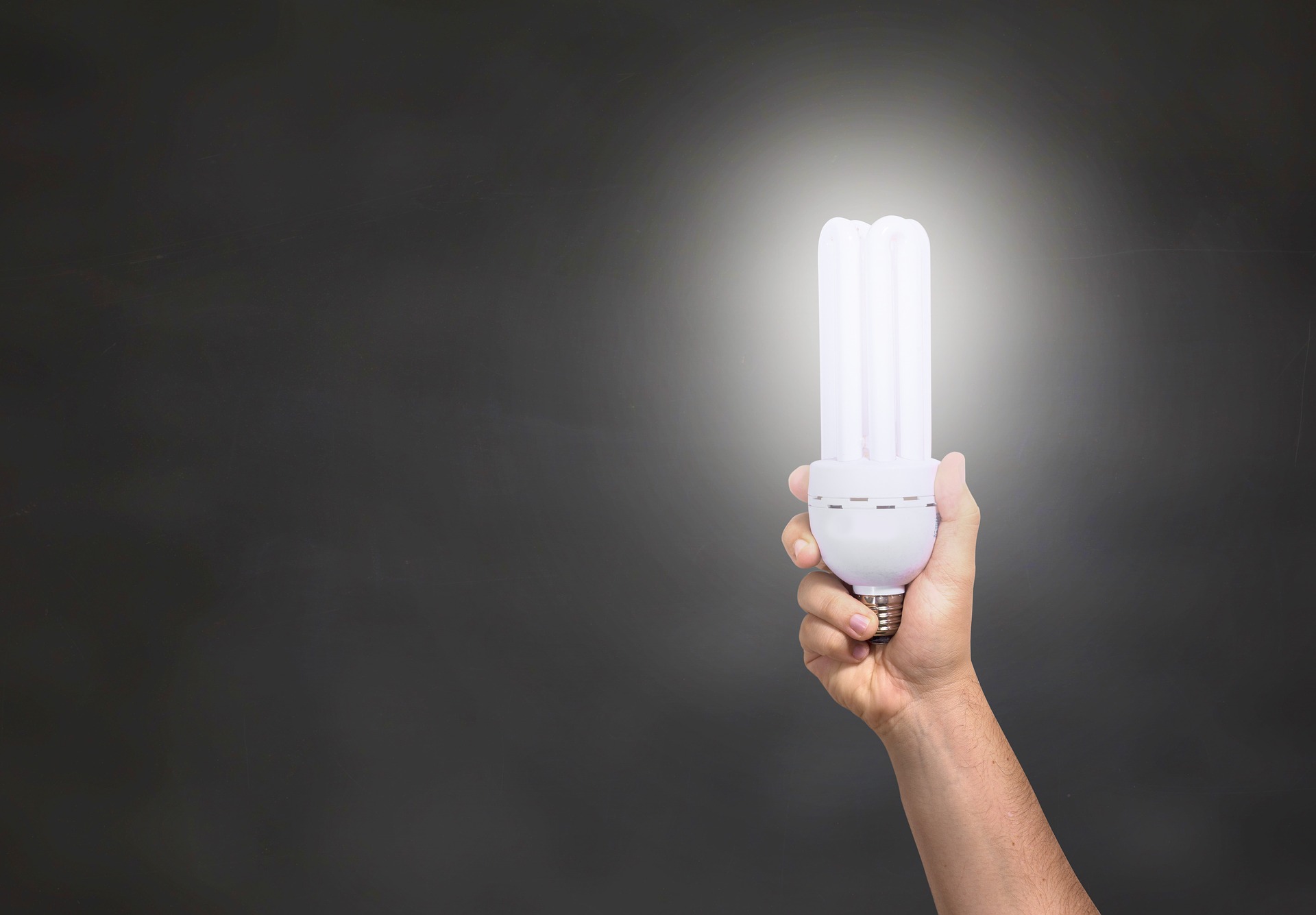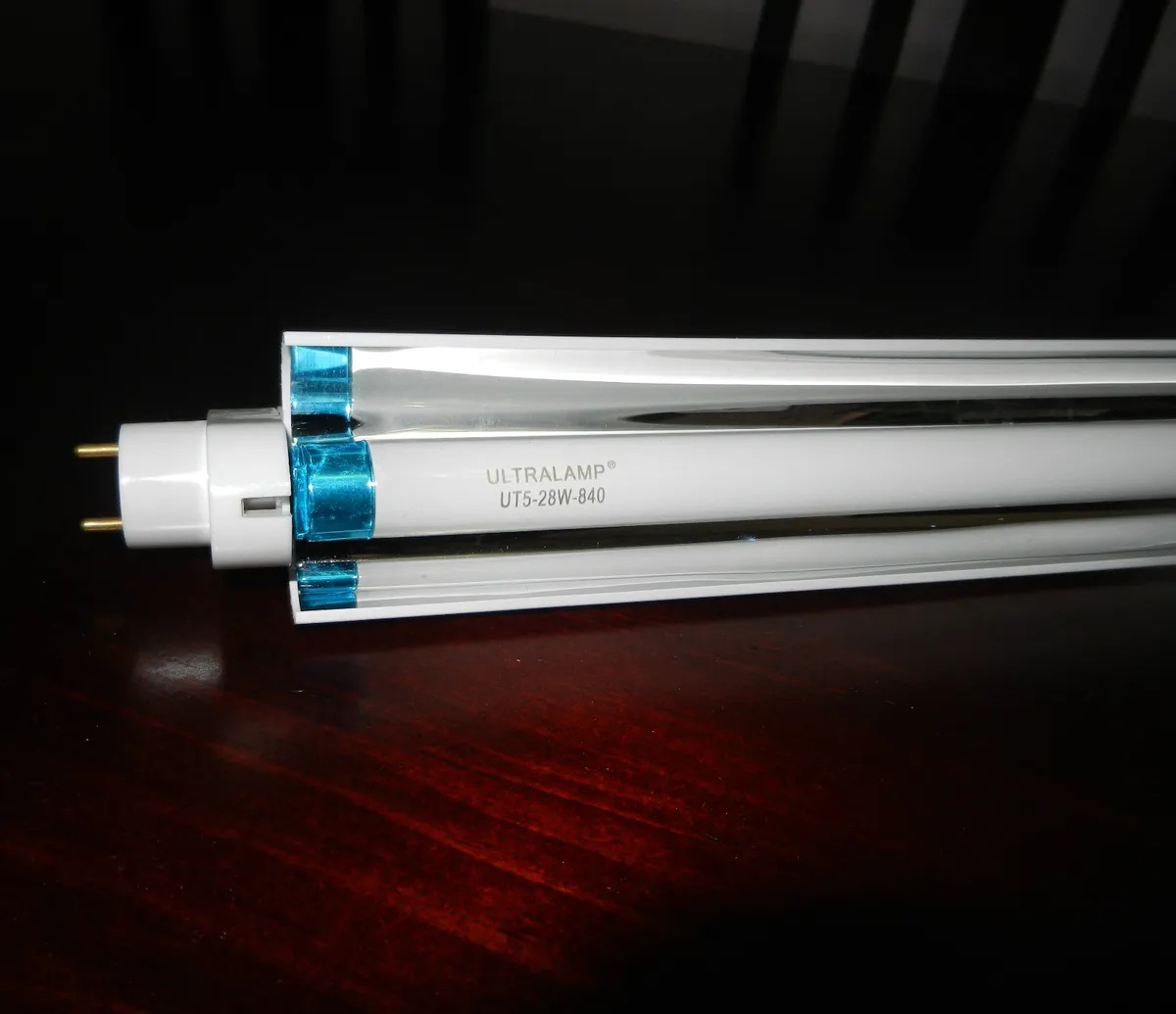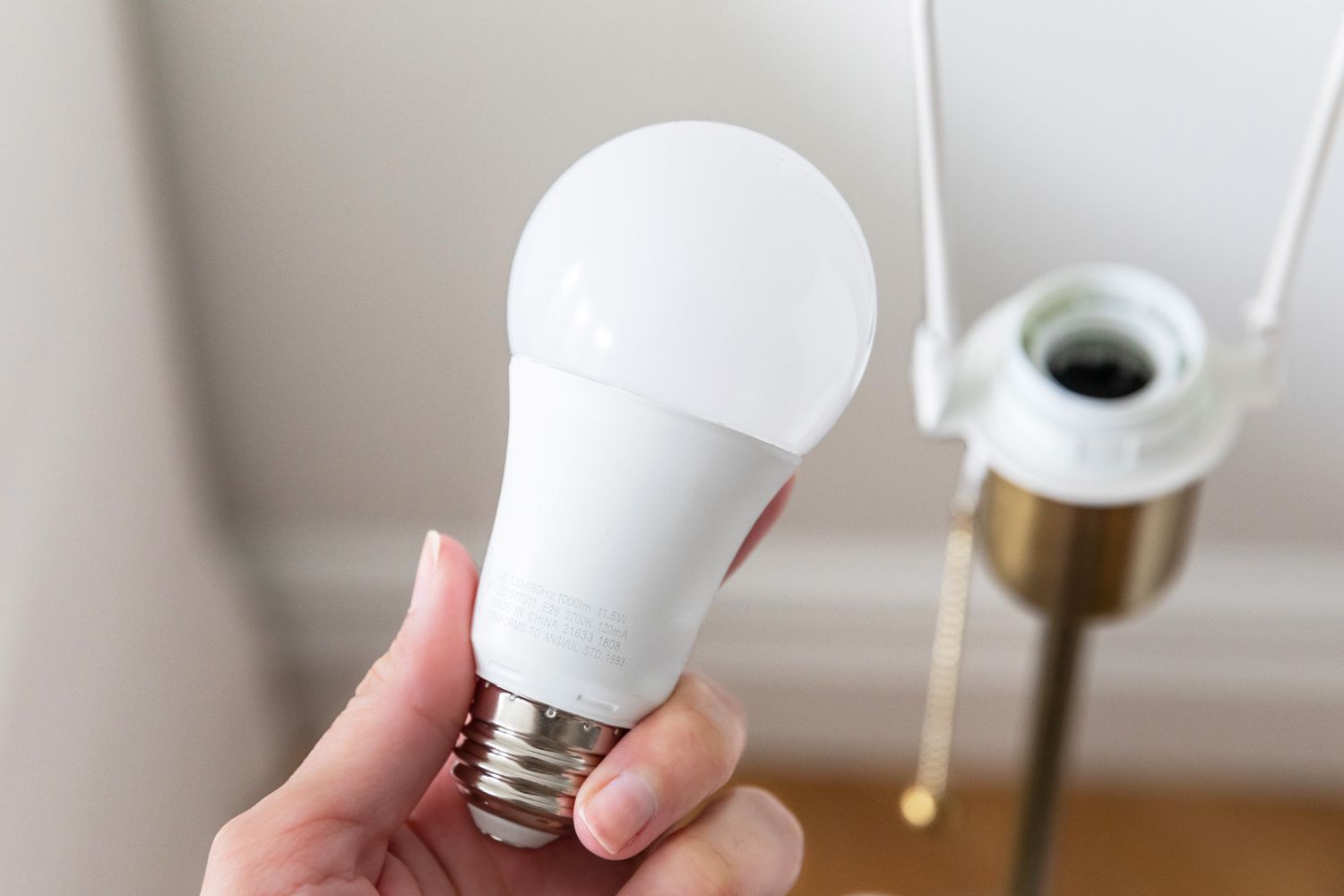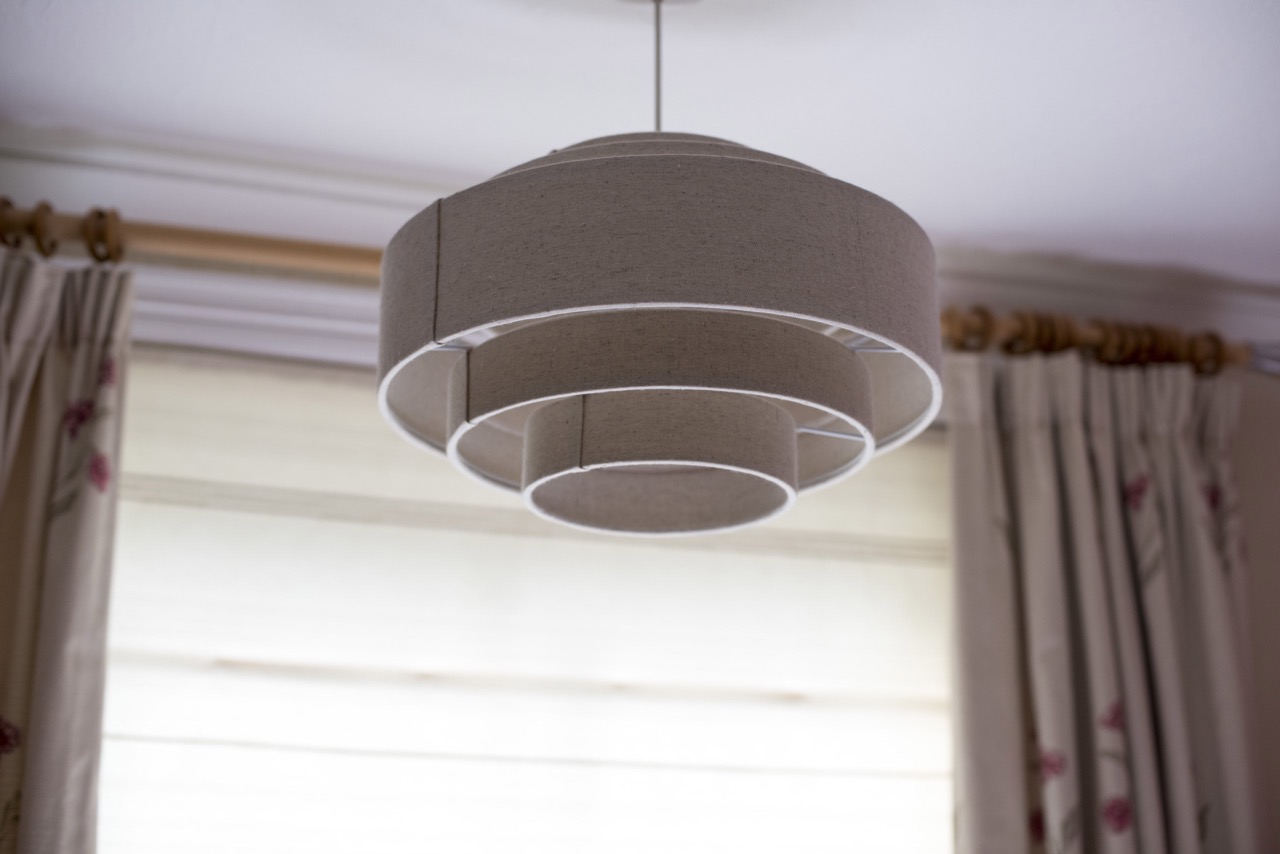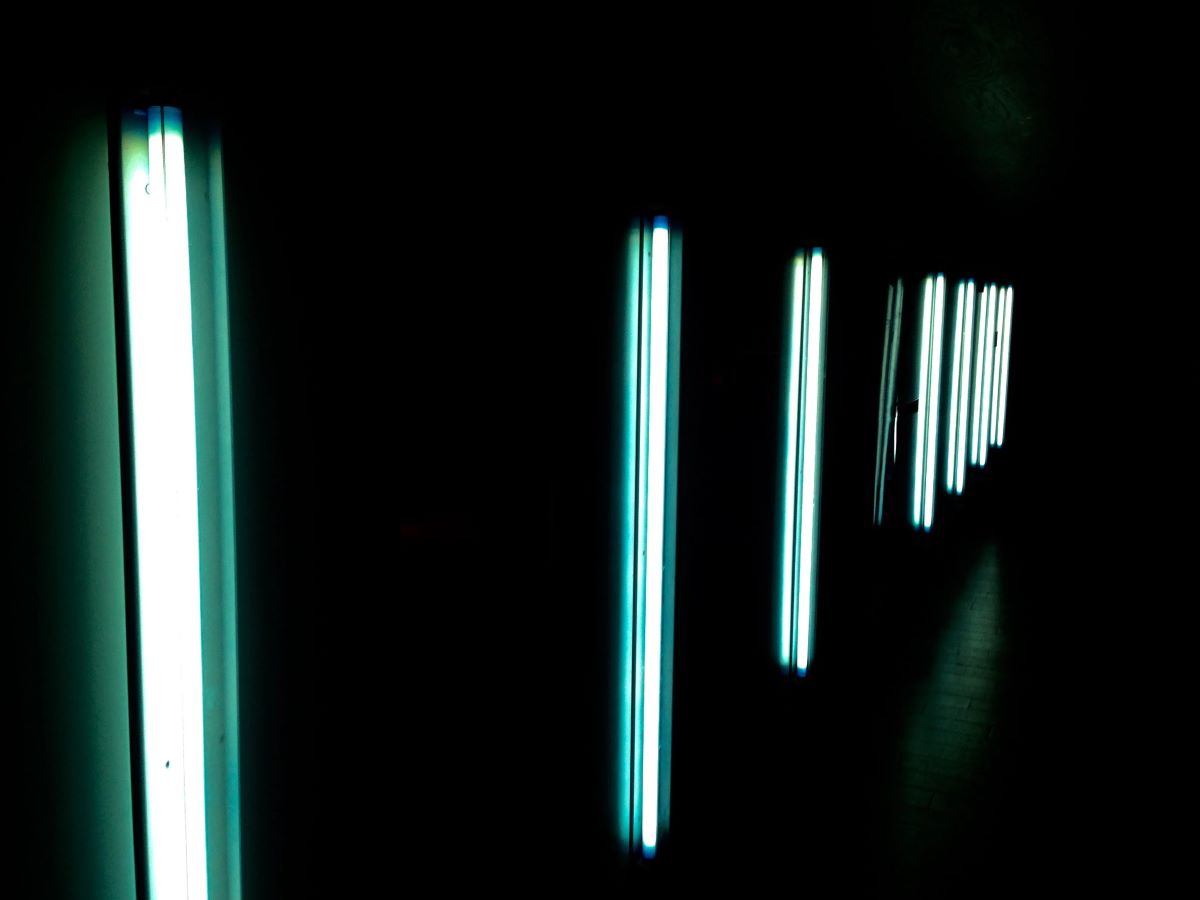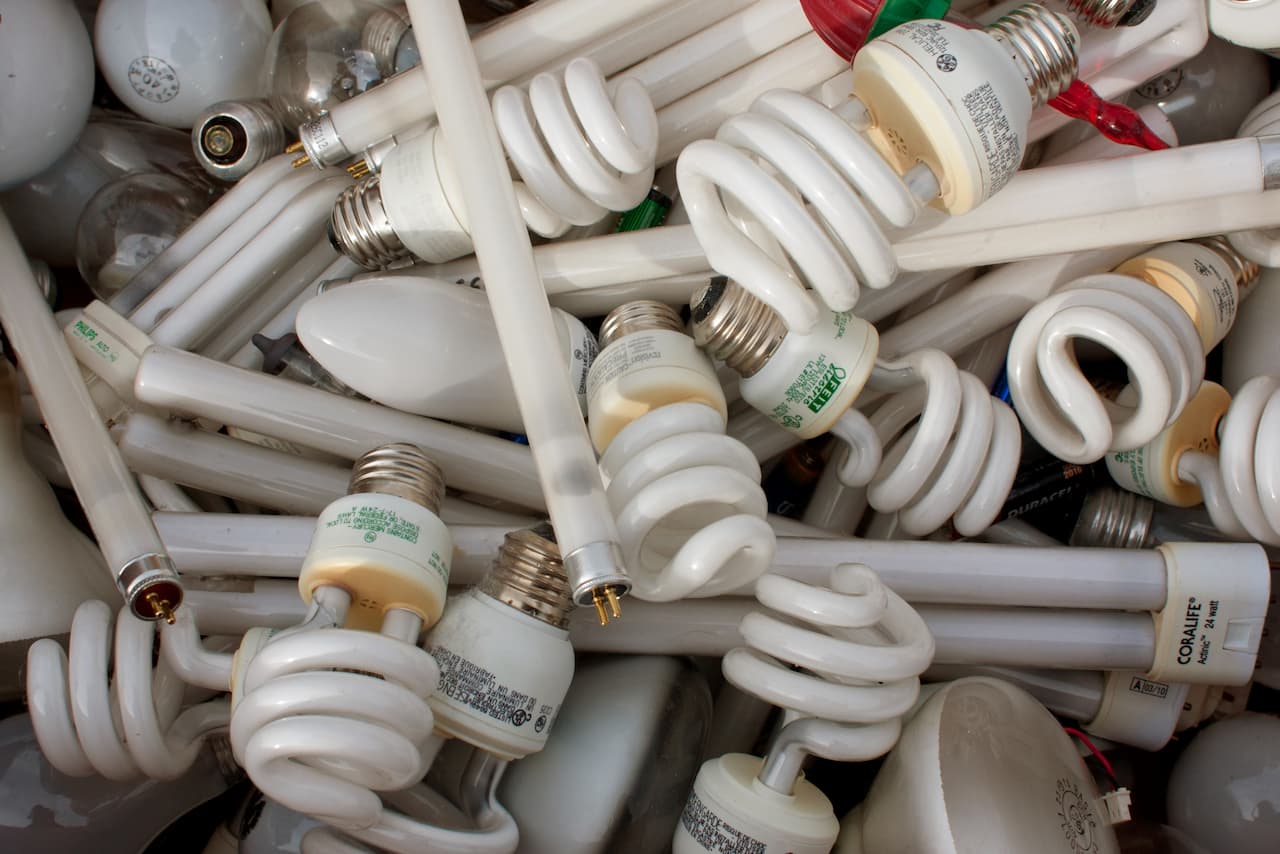

Furniture
How Is Light Emitted By A Fluorescent Lamp
Modified: February 4, 2024
Discover how light is emitted by a fluorescent lamp and its impact on furniture. Dive into the science behind fluorescent lighting and its effects.
(Many of the links in this article redirect to a specific reviewed product. Your purchase of these products through affiliate links helps to generate commission for Storables.com, at no extra cost. Learn more)
Introduction
Welcome to the fascinating world of fluorescent lighting! Whether you realize it or not, fluorescent lamps are a ubiquitous part of our everyday lives. From the brightly lit offices and classrooms to the cozy glow of overhead fixtures in our homes, fluorescent lighting provides efficient and effective illumination for a wide range of applications.
But have you ever wondered how these fluorescent lamps actually emit light? What makes them different from traditional incandescent bulbs or other types of lighting fixtures? In this article, we will delve into the principles behind fluorescent lighting and explore the process by which these lamps produce the bright, energy-efficient light that we rely on.
Understanding the mechanisms behind fluorescent lighting not only satisfies our curiosity but also sheds light on the environmental and cost-saving benefits that come with using fluorescent lamps. So, let’s dive in and uncover the secrets of how light is emitted by a fluorescent lamp.
Key Takeaways:
- Fluorescent lamps emit light through a fascinating process involving gas discharge, electron excitation, and phosphor conversion, resulting in energy-efficient and long-lasting illumination for various applications.
- Understanding the factors affecting light emission efficiency, such as lamp design, phosphor efficiency, and operating temperature, can help optimize the performance of fluorescent lamps for maximum energy savings and environmental sustainability.
Read more: Who Invented The Fluorescent Lamp
Principles of Fluorescent Lighting
Fluorescent lighting is based on the principles of gas discharge and fluorescence. Unlike traditional incandescent bulbs, which produce light through the heating of a wire filament, fluorescent lamps rely on an entirely different process to generate illumination.
The key component of a fluorescent lamp is a sealed glass tube containing a small amount of mercury vapor and an inert gas, typically argon. At each end of the tube, there are electrodes that emit electrons when a sufficient voltage is applied. These emitted electrons collide with the mercury atoms, causing them to release ultraviolet (UV) light.
However, UV light is invisible to the human eye, so an additional step is required to convert it into visible light. This is where the magic of fluorescence comes into play. The inner surface of the glass tube is coated with a layer of phosphor, which is a substance that can absorb UV light and re-emit it as visible light.
When the UV light emitted by the mercury atoms interacts with the phosphor coating, it excites the phosphor particles, causing them to emit photons of visible light. The specific composition of the phosphor coating determines the color temperature and quality of the light emitted by the fluorescent lamp.
By harnessing this process of gas discharge and fluorescence, fluorescent lamps are able to produce light that is much more energy-efficient than traditional incandescent bulbs. They use significantly less electricity while still providing comparable levels of brightness.
Furthermore, fluorescent lamps have a longer lifespan compared to incandescent bulbs. The lack of a filament means there are no mechanical parts that can burn out, making them more durable and cost-effective in the long run.
Now that we have a basic understanding of the principles behind fluorescent lighting, let’s take a closer look at the structure of a fluorescent lamp to see how these principles are implemented.
Structure of a Fluorescent Lamp
The structure of a fluorescent lamp consists of several key components that work together to produce light efficiently. Let’s explore each of these components in detail:
- Glass Tube: The backbone of a fluorescent lamp is a cylindrical glass tube, typically made of borosilicate or soda-lime glass. This tube is sealed and contains a small amount of mercury vapor, as well as an inert gas.
- Electrodes: Located at each end of the glass tube, the electrodes play a crucial role in the operation of the lamp. One electrode is connected to the base of the lamp, while the other is connected to a pin or contact on the lamp’s base. When a high voltage is applied across the electrodes, they emit electrons into the tube.
- Phosphor Coating: The inner surface of the glass tube is coated with a layer of phosphor. This phosphor coating contains various compounds that are capable of absorbing ultraviolet (UV) light and re-emitting it as visible light. The composition of the phosphor coating determines the color temperature and quality of the light produced by the lamp.
- Mixing Chamber: In some fluorescent lamps, a mixing chamber is used to evenly distribute the mercury vapor and inert gas throughout the tube. This helps to ensure consistent illumination across the entire length of the lamp.
- Ballast: The ballast is an essential component that regulates the electrical current flowing through the lamp. It provides the necessary voltage and controls the current to ensure stable operation. In older fluorescent lamps, magnetic ballasts were used, while modern lamps utilize electronic ballasts, which are more energy-efficient.
- Lamp Base: The lamp base is the part of the lamp that connects to the electrical socket. It typically consists of pins, contacts, or a screw base, depending on the specific design of the fluorescent lamp. The lamp base also provides support and stability for the lamp when installed in a fixture.
With all these components working together, the structure of a fluorescent lamp enables the efficient generation and conversion of light. Now that we understand how a fluorescent lamp is constructed, let’s delve deeper into the process by which these lamps emit light.
How Does a Fluorescent Lamp Emit Light?
The emission of light in a fluorescent lamp involves a series of intricate steps, starting from the application of electricity to the lamp. Let’s walk through the process:
- 1. Power On: When the lamp is connected to a power source and switched on, the ballast provides the necessary voltage to initiate the operation.
- 2. Electrode Excitation: The ballast stimulates the electrodes at each end of the lamp, creating a high voltage potential. When this voltage is applied across the electrodes, they emit electrons into the tube.
- 3. Electron Collision: Once the electrodes emit electrons, they accelerate and collide with the mercury atoms present in the sealed tube. These collisions cause the mercury atoms to undergo a process called excitation, wherein the outer electrons of the mercury atoms move to higher energy levels.
- 4. UV Light Emission: As the excited mercury atoms return to their original energy levels, they release energy in the form of ultraviolet (UV) light. However, UV light is invisible to the human eye, so further steps are needed to convert it into visible light.
- 5. Phosphor Conversion: The inner surface of the glass tube is coated with a layer of phosphor. When the UV light emitted by the excited mercury atoms interacts with the phosphor coating, the phosphor particles absorb the UV energy and re-emit it as visible light. This conversion process is known as fluorescence.
- 6. Visible Light Emission: The phosphor coating emits visible light in various wavelengths, depending on the specific composition of the phosphor compounds used. The combination of different phosphors determines the color temperature and quality of the light produced by the fluorescent lamp.
- 7. Continuous Operation: Once the lamp is fully operational, the process of electron excitation, UV light emission, and phosphor conversion continues in a continuous cycle, providing a steady and efficient source of illumination.
By harnessing the principles of gas discharge and fluorescence, a fluorescent lamp is able to emit light in a highly efficient manner. This process allows for significant energy savings compared to traditional incandescent bulbs while providing comparable levels of brightness.
Now that we understand how a fluorescent lamp emits light, let’s explore the role of the phosphor coating in this process and its impact on the quality of the emitted light.
Phosphor Coating in Fluorescent Lamps
The phosphor coating in a fluorescent lamp plays a crucial role in the conversion of ultraviolet (UV) light emitted by the excited mercury atoms into visible light. Without the phosphor coating, the UV light would remain invisible to the human eye, rendering the lamp ineffective as a source of illumination. Let’s explore the significance of the phosphor coating in more detail:
Function of the Phosphor Coating: The primary function of the phosphor coating is to absorb the UV light emitted by the excited mercury atoms and re-emit it as visible light. This conversion process occurs due to the unique properties of the phosphor compounds used in the coating. Different phosphor compounds have varying abilities to absorb and emit different wavelengths of light, resulting in lamps with different color temperatures, such as warm white, cool white, or daylight.
Composition of the Phosphor Coating: The phosphor coating is typically composed of a mixture of rare-earth phosphors, which are compounds that contain elements such as europium, terbium, and yttrium. Each phosphor compound is chosen for its specific spectral properties, allowing for the emission of light in a desired range of wavelengths. By adjusting the composition and concentration of the phosphor compounds, lamp manufacturers can achieve different color rendering indexes and color temperatures.
Color Temperature and Quality of Light: The composition of the phosphor coating greatly influences the color temperature and quality of the light emitted by the fluorescent lamp. Color temperature refers to the perceived “warmth” or “coolness” of the light, with higher color temperatures appearing cooler (bluish-white) and lower color temperatures appearing warmer (yellowish-white). The specific combination of phosphors used in the coating will determine the color temperature and the ability of the lamp to render colors accurately.
Efficiency and Light Output: The efficiency of the phosphor coating also impacts the overall light output of the lamp. A well-designed phosphor coating can maximize the conversion of UV light into visible light, resulting in lamps that emit a higher amount of light per unit of electricity consumed. This makes fluorescent lamps not only energy-efficient but also capable of providing bright and uniform illumination.
Advancements in Phosphor Technology: Over the years, there have been significant advancements in phosphor technology, leading to the development of more efficient and visually pleasing fluorescent lamps. Manufacturers have been able to enhance the color rendering properties of lamps, providing better color accuracy and improved visual appeal. They have also developed phosphors that emit light within narrower wavelength ranges, leading to improved color quality and reduced energy consumption.
The phosphor coating in fluorescent lamps is a critical component that enables the conversion of UV light into visible light, allowing us to enjoy the benefits of energy-efficient illumination. By carefully selecting and refining phosphor compositions, manufacturers have been able to create fluorescent lamps with a wide range of color temperatures and excellent color rendering capabilities.
Now that we’ve explored the role of the phosphor coating, let’s delve deeper into the production of mercury vapor and UV light, which are essential steps in the functioning of a fluorescent lamp.
When a fluorescent lamp is turned on, electricity passes through the mercury vapor inside the tube, causing it to emit ultraviolet light. This UV light then interacts with the phosphor coating on the inside of the tube, causing it to emit visible light.
Mercury Vapor and UV Light Production
Mercury vapor and ultraviolet (UV) light production are integral processes in the operation of a fluorescent lamp. They form the foundation of the light-emitting mechanism and play a vital role in the lamp’s efficiency and overall performance. Let’s delve into the production of mercury vapor and UV light:
Mercury Vapor: Within the sealed tube of a fluorescent lamp, a small amount of mercury vapor is present. This mercury is essential as it acts as the primary source of UV light generation. When electricity is applied to the lamp and the electrodes emit electrons, these electrons collide with the mercury atoms, causing them to undergo a process called excitation. This excitation involves the elevation of the outer shell electrons to higher energy levels.
UV Light Emission: As the excited mercury atoms return to their ground state, they release energy in the form of UV light. This UV light falls into the ultraviolet-C (UV-C) range, which is not visible to the human eye. However, it is crucial for initiating the subsequent steps in the light-emitting process of a fluorescent lamp.
UV Light Interaction: The UV light emitted by the excited mercury atoms interacts with the phosphor coating on the inner surface of the glass tube. This interaction triggers a process called fluorescence, which involves the absorption and subsequent re-emission of light at longer wavelengths.
Phosphor Conversion: The phosphor coating contains compounds that are capable of absorbing the UV light and converting it into visible light. This is achieved through the excitation of the phosphor particles by the UV light energy, causing them to emit photons of visible light as they return to their ground state. The specific composition and characteristics of the phosphor coating determine the color temperature and quality of the light emitted by the lamp.
Efficiency Considerations: Proper production of mercury vapor and UV light is crucial for the overall efficiency and performance of the fluorescent lamp. Factors such as the concentration of mercury vapor and the efficiency of the electrode materials have an impact on the lamp’s ability to generate and sustain the desired level of UV light production. Additionally, the quality and composition of the phosphor coating contribute to the overall efficiency and light output of the lamp.
It is important to note that the presence of mercury in fluorescent lamps raises environmental concerns. While the amount of mercury used in modern fluorescent lamps has been significantly reduced compared to older models, there is still a need for proper disposal and recycling of these lamps to prevent environmental contamination. Many countries have implemented regulations and guidelines for the safe handling and disposal of fluorescent lamps to minimize their impact on the environment.
Understanding the production of mercury vapor and UV light in a fluorescent lamp provides insight into the fundamental processes that enable the lamp to emit visible light efficiently. These processes set fluorescent lamps apart from other lighting technologies and contribute to their energy efficiency and long lifespan.
Now that we have explored the production of mercury vapor and UV light, let’s dive into the excitation and emission of electrons, which is a critical step in the overall functioning of a fluorescent lamp.
Excitation and Emission of Electrons
The excitation and emission of electrons are essential steps in the operation of a fluorescent lamp. These processes involve the movement of electrons within the lamp’s sealed tube, resulting in the generation of ultraviolet (UV) light and the subsequent conversion of that light into visible light. Let’s explore the excitation and emission of electrons in more detail:
1. Electron Excitation: When a high voltage is applied across the electrodes at each end of the fluorescent lamp, electrons are emitted into the tube. These electrons are accelerated and gain energy as they move through the electric field created by the voltage. The accelerated electrons collide with the mercury atoms present in the tube.
2. Collision with Mercury Atoms: When the accelerated electrons collide with the mercury atoms, they transfer energy to the atoms. This energy causes the outermost electrons of the mercury atoms to jump to higher energy levels. This process is known as excitation, and it results in the temporary destabilization of the electron configuration of the mercury atom.
3. Energy Release and UV Light Emission: As the excited electrons in the mercury atoms return to their original energy levels, they release energy in the form of photons. This energy release produces ultraviolet (UV) light in the ultraviolet-C (UV-C) range. However, UV light is invisible to the human eye, so further steps are required to convert it into visible light.
4. Phosphor Conversion: The UV light produced by the excited mercury atoms interacts with the phosphor coating on the inner surface of the glass tube. The phosphor particles contained in the coating absorb the high-energy UV photons and undergo excitation themselves. As these particles return to their ground state, they emit visible light photons at longer wavelengths.
5. Visible Light Emission: The visible light photons emitted by the phosphor particles in the phosphor coating combine to form the visible light that is radiated from the fluorescent lamp. The specific composition of the phosphor coating determines the color temperature and quality of the emitted light, allowing for a range of lighting options such as warm white, cool white, or daylight.
The excitation and emission of electrons in a fluorescent lamp create a cascade of events that lead to the production of visible light. This process is significantly different from traditional incandescent bulbs, where light is generated by heating a filament. The use of electrons and mercury vapor in fluorescent lamps results in a more energy-efficient and longer-lasting source of illumination.
It’s important to note that the efficiency and overall performance of the excitation and emission processes can be affected by several factors, including the concentration of the mercury vapor, the efficiency of the electrode materials, and the stability of the electric field within the lamp. Manufacturers continuously improve these aspects to enhance the energy efficiency and lifespan of fluorescent lamps.
Now that we have explored the excitation and emission of electrons, let’s consider some factors that can affect the overall light emission efficiency of a fluorescent lamp.
Factors Affecting Light Emission Efficiency
The light emission efficiency of a fluorescent lamp can be influenced by various factors. These factors affect the overall effectiveness of converting electrical energy into visible light. Understanding these factors can help optimize the performance and efficiency of fluorescent lamps. Let’s explore some of the key factors that impact light emission efficiency:
1. Lamp Design: The design of the fluorescent lamp can greatly affect its efficiency. Factors such as the shape and size of the lamp, as well as the positioning of the phosphor coating, can impact the uniformity and distribution of the emitted light. Optimized lamp designs ensure that the maximum amount of light is released from the lamp, enhancing efficiency.
2. Phosphor Efficiency: The efficiency of the phosphor coating plays a significant role in light emission efficiency. Higher-quality phosphors with better absorption and emission properties can convert a higher percentage of UV light into visible light. Innovations in phosphor technology have led to improved efficiency, resulting in higher lumen output and better color rendering.
3. Mercury Vapor Pressure: The pressure of the mercury vapor within the lamp can affect the efficiency of light emission. Maintaining an optimal mercury vapor pressure ensures a sufficient number of mercury atoms available for excitation and subsequent UV light production. Proper mercury vapor pressure leads to consistent and efficient light emission throughout the lamp’s lifespan.
4. Ballast Efficiency: The ballast, which regulates the electrical current flow through the lamp, can impact light emission efficiency. Modern electronic ballasts are more efficient than older magnetic ballasts, as they provide precise control over the lamp’s current and voltage, reducing power losses and improving overall energy efficiency.
5. Electrical Current: The electrical current supplied to the lamp can affect its light emission efficiency. Using energy-efficient electronic ballasts that deliver the correct input current and voltage can ensure optimal operation and maximize light output while minimizing energy consumption.
6. Operating Temperature: The temperature at which a fluorescent lamp operates can impact its light emission efficiency. Optimal operating temperature ensures the proper excitation and emission of electrons and phosphor particles, maximizing the conversion of energy into visible light. Overheating can decrease efficiency and reduce the lifespan of the lamp.
7. Light Output Losses: Light emission efficiency can be impacted by losses occurring during light transmission and reflection within the lamp. Minimizing losses through the use of reflective coatings and better light distribution designs can improve overall light emission efficiency by directing the light toward the desired target area.
8. Lamp Aging: As fluorescent lamps age, their light output can decrease. This can be caused by factors such as phosphor degradation, reduced mercury vapor pressure, or electrode wear. Regular maintenance and replacement of older lamps can help maintain high light emission efficiency.
By considering and optimizing these factors, manufacturers and lighting professionals can enhance the light emission efficiency of fluorescent lamps. This improves energy savings, reduces environmental impact, and ensures that fluorescent lighting remains a highly efficient and effective lighting solution for various applications.
Now that we have explored the factors affecting light emission efficiency, let’s conclude our journey through the world of fluorescent lamps.
Conclusion
Fluorescent lamps have revolutionized the world of lighting with their energy-efficient and long-lasting performance. Understanding how light is emitted by a fluorescent lamp provides valuable insight into the principles and processes that make these lamps so effective. From the excitation and emission of electrons to the conversion of UV light by phosphor coatings, each step contributes to the lamp’s ability to produce visible light efficiently.
The principles of gas discharge and fluorescence allow fluorescent lamps to generate light in a completely different way compared to traditional incandescent bulbs. By using mercury vapor and a phosphor coating, these lamps are able to achieve remarkable energy efficiency while providing bright and uniform illumination.
The structure and design of a fluorescent lamp, including the glass tube, electrodes, and phosphor coating, all play a critical role in its operation. Advances in phosphor technology have led to various color temperatures and improved color rendering capabilities, allowing for customized lighting solutions to suit different needs and preferences.
Factors such as lamp design, phosphor efficiency, mercury vapor pressure, ballast efficiency, electrical current, operating temperature, light output losses, and lamp aging can all impact the light emission efficiency of a fluorescent lamp. By considering and optimizing these factors, manufacturers can further enhance the performance and energy efficiency of fluorescent lighting systems.
Fluorescent lamps have become a staple in a wide range of applications, including residential, commercial, and industrial settings. Their energy efficiency, long lifespan, and bright, flicker-free lighting make them an excellent choice for both general illumination and specialized lighting needs.
As we move towards a more environmentally conscious future, it is important to handle and dispose of fluorescent lamps properly due to the small amount of mercury they contain. Recycling programs and proper disposal methods are crucial to minimize the environmental impact and ensure a sustainable approach to lighting.
In conclusion, the process of emitting light in a fluorescent lamp involves a complex interplay of excitation, conversion, and emission. By harnessing the principles of gas discharge, fluorescence, and phosphor technology, fluorescent lamps continue to provide efficient and effective illumination for a wide range of applications. Whether in offices, schools, homes, or other spaces, fluorescent lighting remains a reliable and energy-saving choice for all our lighting needs.
Frequently Asked Questions about How Is Light Emitted By A Fluorescent Lamp
Was this page helpful?
At Storables.com, we guarantee accurate and reliable information. Our content, validated by Expert Board Contributors, is crafted following stringent Editorial Policies. We're committed to providing you with well-researched, expert-backed insights for all your informational needs.

